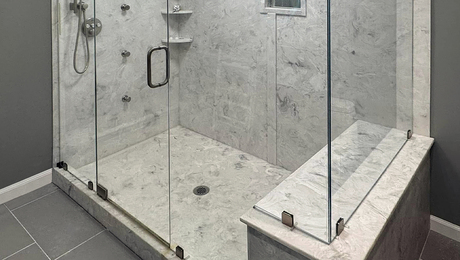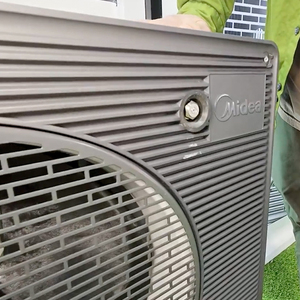Condensation on the ceilings
I’m having a serious condensation problem in my house. HOUSE FACTS I have recently purchased a small single story house in southern WV. The house was built in the 70’s. It is a 24 x40, 3 bedroom home with a crawlspace foundation. The walls are 2×4 construction with a hipped truss roof. The attic currently has R-19 fiberglass insulation. Foil faced is toward the heat side. The crawlspace is vented and is insulated with R-19 foilfaced insulation and it has been put in wrong, foil toward the cold side. (I hope to change this soon).The house is heated with electric base board heat and an open flamed ventless fake gas fireplace located in the livingroom. We are currently heating the house with the fireplace, the electric base board is too expensive.
THE CONDENSATION PROBLEM The condensation tends to gather on the ceilings in the back bedrooms, which are at the opposite end of the house from the gas heater. The codensation tends to be about 4″ in on the ceiling from where outside walls meet the ceiling. Condensation also tends to be located on the edges of most of the double pane windows in the house.
Is my problem the ventless gas heater? I am planning to install a vented high efficiency gas wall heater (Rinnai) in place of the ventless. Do you think this will fix the problem?



















Replies
When you do not have a forced air system, of any sort, you will find this type of condensation. To check it out put a fan in the room and circulate the warm air from the electric heaters, this should solve the problem. A new forced air system in the crawl space, with ducting, might be an idea.
David, I appreciate the info. My wife and I are out the door right now to buy CO detectors and we have opened the windows about a 1/4 of an inch at the top in each of the bedrooms. Our next plan is to install the vented gas heater and then hopefully in the spring we will install a new forced air HE furnace. I do not know why manufacturers are allowed to build these vent less heaters. I know a lot of people that use these type of heaters in their homes to heat their house. I know that they don't leave doors and windows open and they definitely don't have Co2 detectors in their homes. Hopefully not too many people will have to die before there are laws that will help regulate the use of these heaters.
Sincerely,
Brad Buddenberg
Yes. But the first thing I'd do is buy a good carbon monoxide detector. In fact, I'd do it today, and hook it up within five minutes of getting home. Burn any hydrocarbon, and you get water and carbon dioxide as waste. The water is condensing where the house is coldest, further from the stove. If something goes wrong with the heater, or it becomes oxygen starved, it will produce carbon monoxide (CO) instead of carbon dioxide (CO2). CO will kill you at relatively low concentrations because the hemoglobin molecules that transport oxygen (O2) through your blood would rather bond with CO than with O2. Once they bond with CO, hemoglobin molecules can't transport O2 anymore. Even at very low concentrations, CO can effect your health. Please, buy and install a CO detector, and then a vented heater.
Andy
Andy Engel
Senior editor, Fine Woodworking magazine
Other people can talk about how to expand the destiny of mankind. I just want to talk about how to fix a motorcycle. I think that what I have to say has more lasting value. --Robert M. Pirsig
Edited 1/21/2005 4:32 pm ET by ANDYENGEL
"Is my problem the ventless gas heater?"
That is possible. And while we talking about that, do you have a Co2 detector?
"I am planning to install a vented high efficiency gas wall heater (Rinnai) in place of the ventless. Do you think this will fix the problem?"
I don't know, but it sounds like a very smart thing to do if you're currently using ventless open flame. I know there are other posters here who would tell you that you should consider this to be urgent. I suspect they are more right about that then wrong.
Is there an exhaust fan in the bathroom? Does it exhaust to the outdoors? Is it used when showering and bathing? Is there an exhaust fan in the kitchen? Does it exhause to the outdoors?? Do you use it whenever the pots are sending clouds of steam into the air?
You don't tell us enough about the crawl space. Dirt floor? Gravel? Covered with plastic?
Edit: Brad, Welcome to Breaktime!
If you click on your name above (where it says "To: Brad") you will open your profile. We would appreciate it if you could fill some of that in.
Thanks.
Rich Beckman
Another day, another tool.
Edited 1/21/2005 5:09 pm ET by Rich Beckman
I would also advise to check your insulation above the exterior walls. Since that's where the condensation is forming the cieling there is probably colder then the rest.
Jeff
The ventless does throw a lot of moisture into the house. Get a humidity meter and check what it is, especially in those back rooms. Over 40% is not good at all, and the humidity needs to drop as temperature drops, down to about 20% at 0F.
You should normally get a "little" condensation/frost on windows at outdoor temps below about 10F. But it should just be a little.
(If you're just getting a "little" condensation on windows, but getting condensation in the ceiling, then you need better attic ventillation.)
Edited 1/21/2005 6:08 pm ET by DanH
>>Is my problem the ventless gas heater?
It is at least a significant factor; as noted, there is a lot of water vapor in combustion by-products.
And, as noted, there are potential significant CO poisoning risks with ventless heaters.
Please be aware that ventless heaters are not intended to be the primary heat source in a house, and whenever you turn it on, you're supposed to open a door or window (door is better) an inch or so.
Also be aware that they are not allowed to be used in bedrooms.
As Andy said, get and use good CO detectors, one on each living level of the house.
If anyone living there has been experiencing long term flu symptoms or other poor health effects, consider the possibility of long term low level exposure, which can have nasty, long health effects.
Please note my sig below!
View Image
Sojourners: Christians for Justice and Peace
After you get the CO detector and add the furnace.
Then get the humidity guage.
Also cover the ground in the crawlspace with poly, close up the vents, remove the insulation under the floor and insulate the foundation walls.
Brad,
If I had to guess, I'd say it' 100% the fault of your ventless heater. My wife's uncle heated his attached garage with a ventless NG "fireplace" last winter. He mentioned how high the humidity was and asked me to come over and take a look.
What a mess...the insulation in the attic was saturated and frozen as were the walls and every other cold surface. In the spring he had water stains everywhere and mold and mildew in his attic.
In my book ventless is for temporary heating or extra heat only. It is not a primary heat source.
Garett
ps - the advise on carbon monoxide detectors is spot on.
Water vapour is the primary by-product of combustion of this kind of fuel. You are making gallons of water every day and not venting it out.
Welcome to the
Taunton University of Knowledge FHB Campus at Breaktime.
where ...
Excellence is its own reward!